Review: BlackBerry Classic
Dec 24, 2014, 7:00 AM by Eric M. Zeman
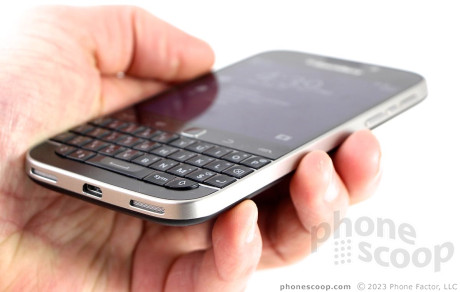
BlackBerry returns to what it knows best with the Classic: a compact handset that is best used for managing email. The Classic is a one-trick pony in a stable full of tricked out ponies.
Form
Is It Your Type?
The BlackBerry Classic is a niche device for a small set of people. If you're a business pro who needs a dedicated, secure emailing machine, then the Classic is for you. If you're anyone else, there are better phones worth your money.
Body
As I said in my initial hands-on piece, BlackBerry still knows how to make a quality piece of hardware. The company clearly crafted the Classic with care. The design is conservative to a fault, but that's the whole point. Things that have the word "Classic" in their name are hardly ever flashy or showy. It's a staid phone that dials in the styling cues of BlackBerry's heydey perfectly.
The phone comes in either black or white. Whichever shade you choose, the front and back surfaces are wrapped in a classy metal band. I like the way the metal offsets the white or black plastics. It's perfectly suited to those who wear suits and spend their days in boardrooms and corner offices. Of course, the keyboard gives it a retro look thanks to the total lack of keyboards on the bulk of today's phones. More to the point, most people who encounter the Classic will think the phone actually is from 2010.
The Classic is compact, at least compared to many of today's flagship smartphones. It's close in size to the iPhone 5s or Nexus 5, for example, but looks tiny next to the iPhone 6 Plus or Nexus 6. It is significantly bigger than either the BlackBerry Q10 or BlackBerry Bold 9900. I found it comfortable to use one-handed. I had no trouble reaching the entire front face of the phone with my thumb; no repositioning required. I wish the phone were a tad thinner, bit it fits into pockets quite easily compared to today's larger high-end phones.
I'm pleased with the quality of the handset's materials and manufacturing. The metallic band provides a solid frame on which to hang the rest of the phone's components. The whole phone feels solid. The seams are nice and tight.
BlackBerry brought back the core five-button navigation cluster that adorned its devices for years. Your thumb will be happy to relive the glory days with the dedicated send/end keys, menu/back keys, and optical trackpad, which are all placed between the display and the 35-key QWERTY keyboard. The four buttons are flat with no markings to help your thumb find them, but old-school BlackBerry users won't need to dig deep to awaken their muscle memory. The travel and feedback of these four buttons is good, but could be a little bit better. The optical trackpad is a touch too small for me; I'd prefer it to be bigger, but understand that it may be just right for others. It's best used to adjust the position of the cursor when editing text. You can adjust the trackpad's sensitivity if you wish. It works very well. Using the touchscreen itself is, otherwise, much faster for interacting with on-screen content.
The keyboard itself is quite good and works as intended. The keys have an excellent shape to them, which makes them easy to find and use. I didn't make too many typos, but I wish periods, commas, and other special characters were easier to trigger. How fast is it? I'm much, much faster when using the swipe-style keyboards that are part of Android and Windows Phone. Swiping input is far quicker and more accurate over the long term when it comes to pecking out a couple hundred words at a time. Quite frankly, I'm glad physical keyboards are no longer a thing. However, for those who prefer the feel of real keys, BlackBerry's buttons are worth pushing. (I'll have more to say about BlackBerry's typing software later in the review.)
(With that said, I haven't used a physical keyboard for text entry on a daily basis in about seven years. The tendons in my thumbs were aching after the first day of punching out emails and texts. I don't miss pressing physical buttons on QWERTY keyboards at all. My tendonitis has been happily absent since I switched to software keyboards, which don't require any real pressure to use. I was not happy about its return thanks to the BlackBerry Classic.)
Both the SIM card and memory card are accessed via separate trays built into the left edge of the phone. You need a paperclip to eject them. They didn't give me any trouble. The Classic makes use of BlackBerry's standard three-key array on the right side of the phone. This includes volume buttons and a user-assignable action key in the middle. All three keys have a good profile and excellent travel and feedback. The screen lock button is on top. It, too, has a great profile and superb travel/feedback. You'll find the stereo headset jack alongside the screen lock button on top. The microUSB port is on the bottom with speakers tossed in for good measure.
The rear shell has a dimpled pattern to it that I find comfortable against my skin. In a bit of a stunner, I was perplexed to discover the rear shell cannot be removed. BlackBerry has long pitched the benefits of its previously interchangeable batteries. My, the times they are a-changin'.
Performance
Screen
The Classic's screen measures 3.5 inches across the diagonal. Like the displays of the BlackBerry Q30 and Passport, the Classic's is square. It has 720 x 720 pixels. That gives it the quality of a 720p display, just cropped down to a square shape. If you've grown used to the 5-inch wide-screens of today's flagships, dropping back down to a small, square screen is maddening.
BlackBerry claims the Classic's display is ideal for viewing email. Yeah, that's about it. I mean, it's sharp enough that on-screen elements look good and I found it plenty bright enough. Viewing angles are great. You'll be able to use the phone outside without issue, and reading emails is no problem. Looking at photos or videos on that small square screen, however, just plain stinks. There's no gentle way to say it. The Classic is not a media device, and that's never more obvious than when gazing at the screen.
Signal
The Classic is being sold unlocked at the moment, and is compatible with the HSPA/LTE networks of AT&T and T-Mobile. Verizon will also sell the phone, but so far we were only able to test it on AT&T's network around New York City.
BlackBerry still knows how to engineer a decent telephone. With an AT&T SIM installed, I saw excellent performance from the Classic in both strong and weak network conditions. It connected calls on the first dial each and every time, even when there was almost no signal. It didn't drop any calls while I reviewed it.
Data performance wasn't quite as impressive, but it still managed to push and receive packets everywhere I took the phone. The Classic is about the slowest LTE device I've tested on AT&T's network. I didn't see a peak data speed over 12 Mbps under even the best signal coverage. In the same spot, other AT&T devices reached peaks close to 50 Mbps. When coverage was poor, web browsing slowed to a crawl, but it never timed out completely.
Sound
The Classic is an excellent voice phone as tested on AT&T's network. Calls exhibited above average quality with clear audio. The earpiece produces a significant amount of sound, and I never had trouble understanding conversations. Those who I spoke to through the Classic said I sounded “very good.” The speakerphone carries over the same call quality, which means loud and clear calls. I was easily able to use the Classic as a speakerphone in moving vehicles and other semi-noisy spaces. Ringers and alert tones are loud, too.
Battery
BlackBerry claims the Classic can deliver 22 hours of continuous use. The claim isn't terribly far off. I had no trouble getting the device to run from 8AM to midnight, and it often had plenty of power left at the end of the day. I'd say casual users can get two full days from the Classic's battery. Power users should be able to get a full day of hardcore use from the Classic with at least some room to spare.
The Classic includes a fairly sophisticated battery saving mode. You can control when it comes on, and you have a wide range of options to select for reducing power drain. For example, you can limit CPU performance, squelch notifications, turn off data/location, and so on.
Basics
Menus
The Classic runs BlackBerry operating system 10.3.1. The platform has evolved little since its 2013 debut, but there are a few features worth discussing.
Like most modern smartphones, the Classic offers notifications, a clock, and select app shortcuts on the lock screen. I wish I could customize the lock screen, but it's inflexible. A drop-down shade at the top provides access to controls such as the wireless radios and full settings tools. It mimics those of Android, iOS, and Windows Phone a bit. The little red light blinks happily next to the earpiece speaker every time there's a new message. You'll always know if you've got mail.
BB10 has three basic partitions to the home screens: BlackBerry Hub, the multitasking/recent apps screen, and the main app menu.
The recent apps screen, which is what you get when you unlock the phone, is used for multitasking. It houses active tiles of the last eight applications you've used; each tile provides a preview of that app and its content. The main app menu is a swipe to the right. Here, all apps are listed in a grid. The apps can be organized into folders if you wish. BlackBerry Hub, the phone's main messaging center, is a swipe to the left from the multitasking screen.
BlackBerry uses a finger gesture called BlackBerry Flow to move through the UI. The gestures take time to learn and master. The most important gesture is called BlackBerry Peek, which is used to see a preview of new messages and calls from within any app on the phone. The Classic's optical trackpad can be used in place of the swiping gestures, but not all of them. It takes a little while to warm up to the home screen setup, and especially to how the BlackBerry Flow gestures interact with the trackpad. Long story short, I actually prefer the BlackBerry Q10, which doesn't have a trackpad at all.
The Classic offers few customization tools. You can select wallpapers and ringtones (including ringer profiles), but the behavior of the home/multitasking screen cannot be changed. Shortcuts to the messaging app and camera persist on the multitasking screen, despite the fact that BlackBerry Hub is one swipe to the left.
In terms of performance, the Classic is often slow and janky. It has a 2012-era Qualcomm S4 Pro processor under the hood, and it shows. This phone takes its time to get things done and I found myself impatient with its performance.
Calls and Contacts
The phone and contacts apps are somewhat merged, though each can be opened separately. A quick press of the physical phone button on the Classic launches the phone app in two blinks of an eye. Call history is the default view when you open the app. BlackBerry added speed dials to the phone app, which appear at the top of the screen along with a shortcut to voicemail. You can only see three speed dials at a time, but you can add more if you want. The phone app itself includes many of the options you're used to, such as send to Bluetooth, speakerphone, and mute.
The contacts function, which is built into the phone app, can pull in data from Twitter, Facebook, and LinkedIn, in addition to email contacts. I like that the app offers a peek at your recent communiques with various contacts and makes it easy to call or message them. But it's deadly slow. Searching through the contact app was time consuming in the worst possible way. The app can hold a treasure trove of data, however, and makes it easy to connect to people from their info cards.
BlackBerry Hub
The Hub is BlackBerry's universal inbox for absolutely all of your communication needs.
The Hub handles email, SMS, MMS, IM, BBM, LinkedIn, Twitter, and Facebook. It's your one-stop shop for all messaging tasks, be they long-winded or short snippets. You can view all of your messages jumbled together in one large heap, or separate them into their respective inboxes. All of the messaging inboxes offer threaded views, attachments, and the same basic set of tools for composing and controlling them. It's incredibly powerful to be able to manage everything from one screen.
The Hub is one place where the screen seems infuriatingly small. Thanks to the overbearing interface that surrounds the Hub, you can only see five messages in your inbox at a time. Compare that to a dozen or more on most any other smartphone. This necessitates tons of scrolling through your inbox.
The Hub itself can be customized in that you can mute inboxes at will, as well as arrange how they appear in the Hub. You can also get a “peek” of what's in the Hub from any app by using a specific "upside-down L" swiping gesture. It's a neat way to be able to see what's going on in your inbox without necessarily leaving the task at hand. The app has an insane number of controls for dictating behavior. You can turn threaded messaging on/off; you can control whether or not external images are loaded; you can choose to see/not see sent messages and on and on and on. No other mobile email app offers the same level of granular control over every single feature. You could call this a plus or minus, depending on how much time you want to spend futzing with your email app. It's definitely designed for messaging power users.
Social networking is built into the sharing features of the OS as long as you sign into your various social accounts during the set-up process. Of course, separate apps are available for Facebook, Twitter, and LinkedIn. They function much in the same way as on Android and iOS devices, but the fastest way to interact with your social networks is via the Hub.
BBM has expanded significantly since we last tested a BlackBerry handset. It's now available to Android, iOS, and Windows Phone devices. Despite the broader availability, no one I know uses BBM. No one. The app lets you share photos, videos, a live view of your own screen, as well as conduct two-way voice and video calls. Some of the newer features allow you to set timed responses and un-send messages you'd rather people not read. The app works very well. It's a shame no one uses it.
As powerful as BlackBerry's communications tools are, they sure aren't pretty to look at. They rely on a minimalistic design that's just plain boring and off-putting to me.
Typing
BlackBerry allows you to turn word prediction on or off. BlackBerry's prediction engine is quite good, and I was able to compose entire messages without actually finishing any words. But it takes up precious screen real estate that would best be used to see the message you're typing (or the original to which you are replying). It's an annoying trade-off.
I like how easy it is to control text formatting (bold, italic, etc.), font size, attachments, and even font colors through the keyboard's controls. However, having both a touchscreen and an optical trackpad is annoying at times. If you're editing text, for example, you can use the trackpad to move the cursor back and forth or up and down. Or, you can reach up and try to move it by pressing your finger where you want it to go on the screen. Or, you can use a new, on-screen editor that makes it easier to move the cursor around manually. Why on earth are there three ways to move the cursor?
Let's not forget BlackBerry's famous keyboard shortcuts. Press "T" to go to the top, or "B" to go to the bottom (and many, many others). Options are great, but too many options muddy things up for anyone but serious power users.
Extras
Not to be overly harsh, but beyond messaging the BlackBerry Classic stinks at pretty much everything else.
Media
The Classic includes a bare-bones app for music playback and another for video playback. These interact with sideloaded content that you've added through a media card. They work, but aren't all that much fun to use. If you're interested in third-party apps the options are strictly limited. Slacker and iHeartRadio are available in the BlackBerry World Store, for example, but Pandora and Spotify aren't. That YouTube app you see on the app drawer? Yeah, that's just a shortcut to the mobile YouTube web site. Lame.
In general, audio sounded good through my favorite headphones. The Classic's small, square screen is simply not meant for video consumption. You get a letter-boxed experience and video doesn't fill the entire screen. If there's a cross-country flight in your future, I recommend you bring a tablet for movies.
Camera
The Classic doesn't have a dedicated camera button, but you can assign the action key to the camera if you wish. Whether you use the action key or the on-screen shortcut, the camera is slow to open.
BlackBerry has dressed up the camera app a little bit and added a few new features. The camera's default behavior is to take square (1:1 aspect ratio) pictures. That means the viewfinder fills the entire screen and there are software buttons/controls overlaid across the bottom of the screen. There are four (FOUR!) ways to take a picture: press the screen, press the shutter button on the screen, press the action key, press the spacebar. Regardless of which you pick, the Classic is slow to focus and capture the image.
The four control elements placed along the bottom of the screen are: user-facing camera, shutter button, video camera, and settings. The shutter button is nice and big so you won't miss it. There's a thumbnail at the far left side of the control strip that takes you to the photo gallery.
All of the camera's new features are found in the settings menu. The Classic offers five shooting modes: auto, action, whiteboard (literally for taking pictures of white boards — you know, work-related stuff), night, and beach/snow. The flash can be set to auto, on, or off. You can select between three aspect ratios. The sensor captures 4:3 images, so if you pick 1:1 or 16:9, you're cropping out part of the sensor. At least the viewfinder changes to accurately show what will be in the image when you switch to the different aspect ratios.
The Classic includes HDR. It's dreadfully slow. You can only use it on truly non-moving subjects. The camera includes a timer as well as control over face detection, grid lines, stabilization, and geotagging.
There's also the TimeShot feature, which is meant to help capture the best image of peoples' faces. The feature essentially shoots five quick shots and — using the on-screen tools — you can select which of the shots looks best for each of the faces detected in the viewfinder. It's useful if you have little kids who blink all the time. The Classic also includes burst mode and panorama.
Using these shooting tools is all straight-forward. It's very similar to nearly any other smartphone.
Photos
Honestly, I was expecting captured photos to be much worse. As long as you take the time to learn how the controls work, you can achieve passable results with the 8-megapixel sensor. If you're like most people, however, and leave everything set to "auto" then you're not going to be impressed. Focus was sharp about three-quarters of the time, but off wildly the other quarter. White balance was hit or miss. Exposure was most often accurate with sufficient light (i.e. outdoors.) Indoor shots require the flash, which introduces its own set of problems (blue tint and shadows.) I would say the Classic is acceptable for shots you might otherwise miss, but bring dedicated imaging equipment with you on vacation or to important family events.
Video
The Classic can shoot video at up to 1080p (full HD) resolution. Most of the video I shot looked OK, but far from great. The Classic had trouble with exposure and it tended to blow out whites and other bright areas, while also leaving out the details in dark spots. Focus and white balance were consistently better than with still shots. Again, you can use the Classic for random video needs, but if you have something important to capture please use stand-alone video gear.
Gallery
The gallery application works well when it comes to managing, editing, and sharing photos. The default view in the gallery app shows the most recent images captured with the camera displayed in a grid. You may also choose to sort via albums, thanks to controls that line the bottom of the screen.
The editing features are robust. Images can be cropped and rotated; or enhanced to correct brightness, white balance, contrast, sharpness, noise, and red-eye. You can also apply artistic treatments via filters in the vein of Instagram. The gallery includes a healthy selection of frames for photos, as well, which it didn't offer before. Once you're done editing the photos, you can share them easily to social networks, email, BBM, and upload the files to popular photo services.
Both Box and Dropbox are pre-installed. If you're interested in automatically saving your images, you can do so via either of these apps.
Apps
Apps are perhaps the Classic's biggest downer. The phone itself covers the basics as far as communications tools go. BlackBerry World is available for third-party apps, but the selection isn't even close to what's available for Android, iOS, or even Windows Phone for that matter. BlackBerry World itself is frustrating to wade through, and the search tool is not very useful.
BlackBerry attempted to get around the lack of apps by making the Classic compatible with Android apps, which run in an emulator. If you want Android apps, you can download them from the Amazon Appstore. Personally, it infuriates me that I can't even open the Amazon Appstore without first creating an Amazon account (or signing into an existing account). BlackBerry should have a handshake that lets anyone with a BlackBerry ID automatically have easy access to the Amazon Appstore without requiring the extra signin.
The selection of apps in the Amazon Appstore isn't half bad, but the apps are outdated and don't run smoothly on the Classic.
Bottom line: you're not going to have access to the best and most recent apps with the Classic. Not even close.
BlackBerry Assistant
BlackBerry Assistant is Waterloo's stab at Google Now, Siri, and Cortana. It's a voice-activated assistant.
The best way to initiate BlackBerry Assistant is by assigning it to the action key on the right side. It will pop open and wait for you to say something. You can command the Classic to send messages, make calls, create notes, set alarms, create calendar appointments, and much more. Like all virtual assistants, it takes a while to get the hang of. I found it was adept at dictating my speech into text and generally good at responding to my requests. It doesn't go the extra mile to learn who you are like Google Now and Cortana do, and it has no personality to speak of.
Browser
Apart from BlackBerry Hub, the browser is the Classic's other shining star. The newest browser from BlackBerry does a much better job of handling the web than the BlackBerry browsers of old. It renders web sites quickly and cleanly, and offers features I like, such as multiple tabs, a solid bookmarking tool, and private browsing.
I was generally pleased with the browser's speed on LTE, but it was much better via WiFi. The small screen, however, is a total downer. The display loses so much real estate to the app's controls that you can only view a small portion of web sites at a time. Get ready to scroll. Naturally, the experience is much better when mobile-optimized sites are available. It can load full desktop sites without problem, but they're often impossible to read on the small screen.
Bluetooth
The Classic connected with other Bluetooth devices easily. Phone calls sounded excellent through my favorite headset. I was also able to pair the Classic with stereo headphones and speakers, too. Playback worked fine, but the music didn't sound all that great. The Classic can also be paired with other phones/tablets/PCs to share files.
Clock
The Classic's lock screen displays a large, white, digital clock in the upper half of the screen. It's easy to see from an arm's length away, even outdoors. The clock (and lock screen) can't be customized, so what you see is what you get.
GPS
The Classic comes with the BlackBerry Maps application. The app covers the essential turn-by-turn direction features, but lacks some of the extras that make Google Maps or Nokia HERE so good. For example, it can provide accurate routing between Point A and Point B, but there are no 3D flyovers, satellite imagery, or street views. The Classic was a little slow to locate me, and accuracy was only as close as 30 or 40 feet. Maps loaded slowly, too, which was often frustrating.
Wrap-Up
The BlackBerry Classic is not a bad phone, not by any stretch, but it isn't a good phone, either. As has long been BlackBerry's problem, the Classic is a one-trick pony. Meanwhile, every other pony in the stable has learned compelling new tricks.
The Classic is a fine piece of hardware that has a good mix of materials and design. Call quality is excellent, network performance solid, and the battery life (still) beats the pants off an iPhone. The keyboard is the best in the business, though it's also pretty much the only keyboard in the business. The keys feel great, but I'm faster swiping across glass at this point. BlackBerry Hub is unrivaled in its ability to fine-tune and manage the inbox experience. The phone also lets you accomplish a lot with just one hand, unlike many of today's bulky flagships.
As excellent as the Classic is for managing email and other messaging tasks, it's miserable at everything else. The selection of apps is abysmal and those that are available are inferior to their Android/iOS counterparts. BBM is a great messaging app, but hardly anyone uses it anymore. I think it really says something that the iPhone is better when it comes to creating/editing Microsoft Office documents, too. (The Classic has a crappy, third-party Office viewer.)
I can only recommend the BlackBerry Classic to two groups of people: 1. Die-hard BlackBerry fans who simply won't use any other device; and 2. People who seriously — and I mean seriously — live and die by blasting through their email as quickly as possible. If you like to do anything else with your phone (take photos, watch movies, play games, flirt on dating apps), pick something else.
Comments
Classic review
I love my Classic already. Its exactly what I needed, like an updated Bold 9900. The only thing I didn't like was being forced to give up my Blackberry email address.
I have a nice Android phone for multimedia, this one is my business phone and it is a powerhouse for my uses.
Sincerely,
@Mpls_LimoMike
Rela...
(continues)
(continues)
A one-horse review?
Some things just aren't necessary to most people. Teenagers who live their lives through texting whilst sitting next to each other or whose ability to make judgment calls whilst using a device is hindered, perhaps? Gamers who want a device that allows them to game 24 hours a day (because they cannot be away from some sort o...
(continues)
I commended it on its call quality, battery life, and messaging powers. I pointed out how strong the email is, how good the qua...
(continues)


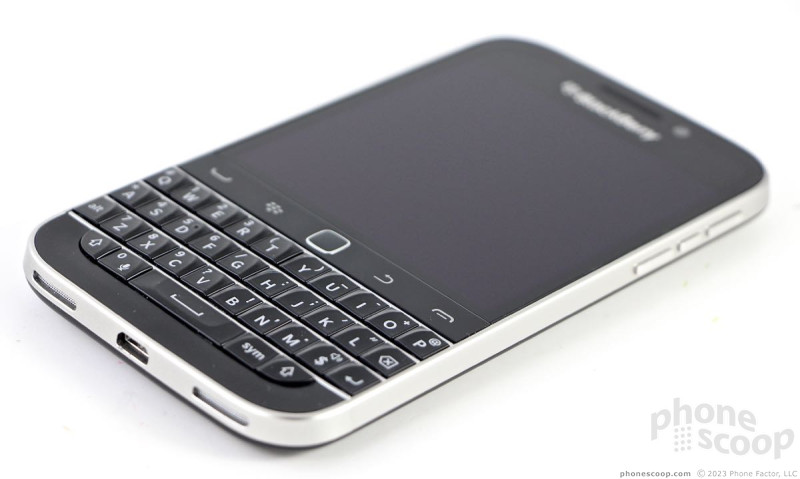














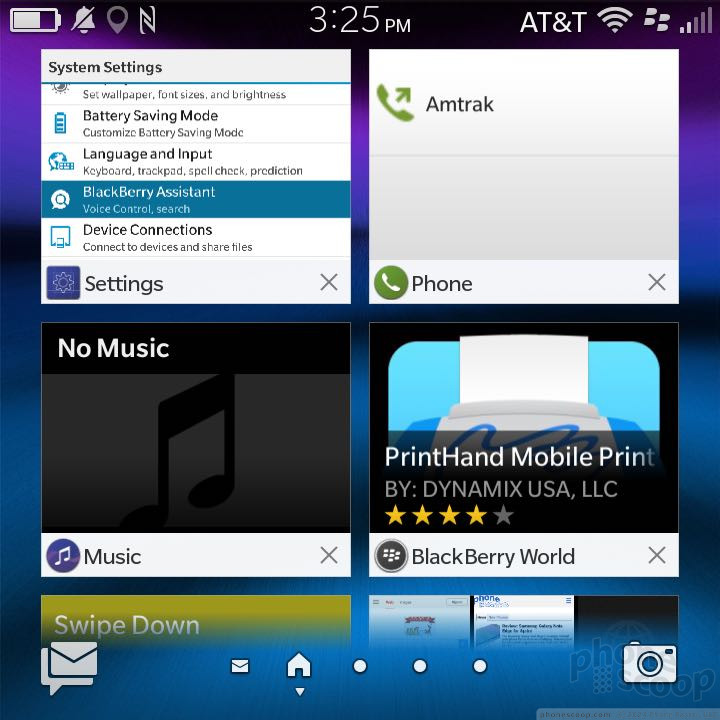



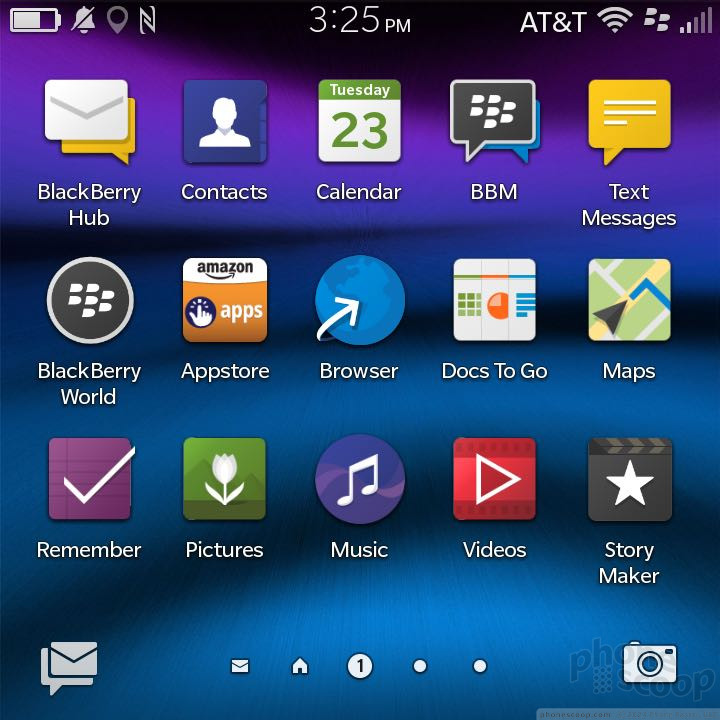



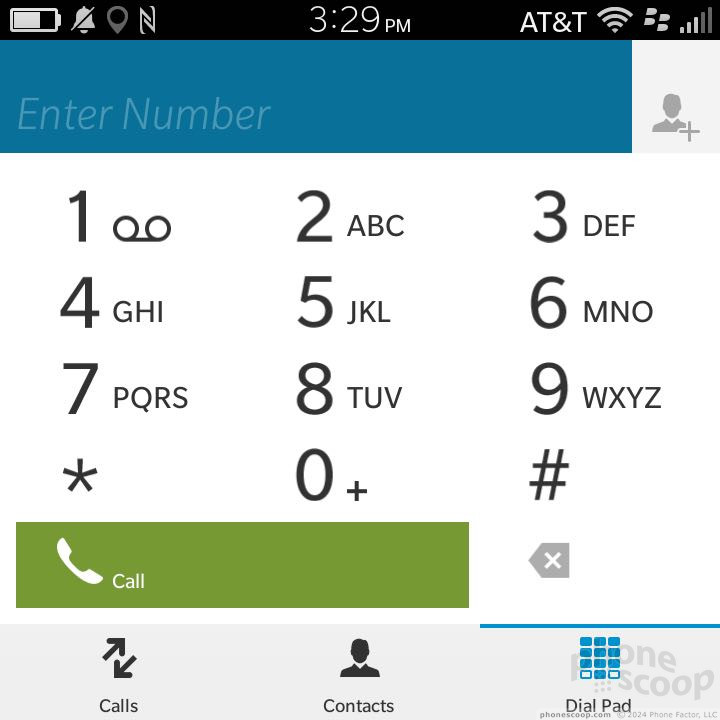






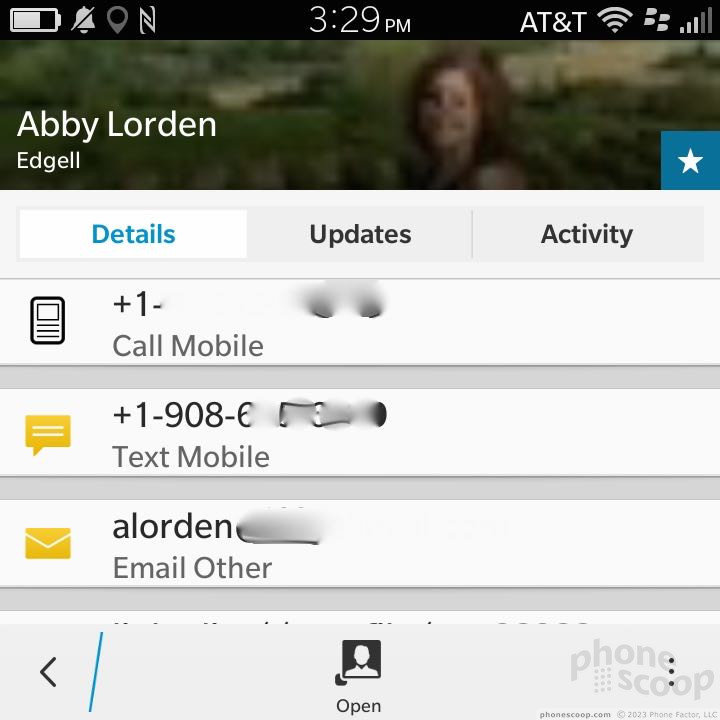





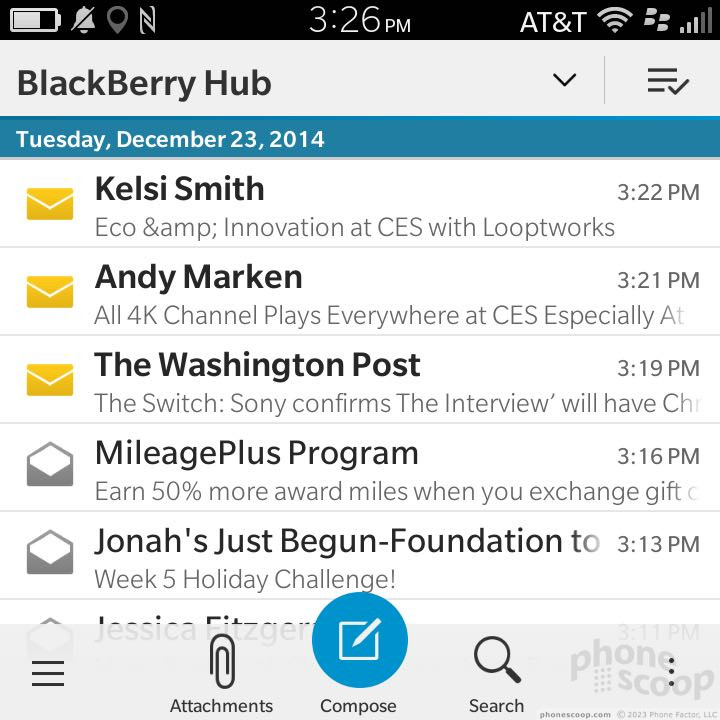





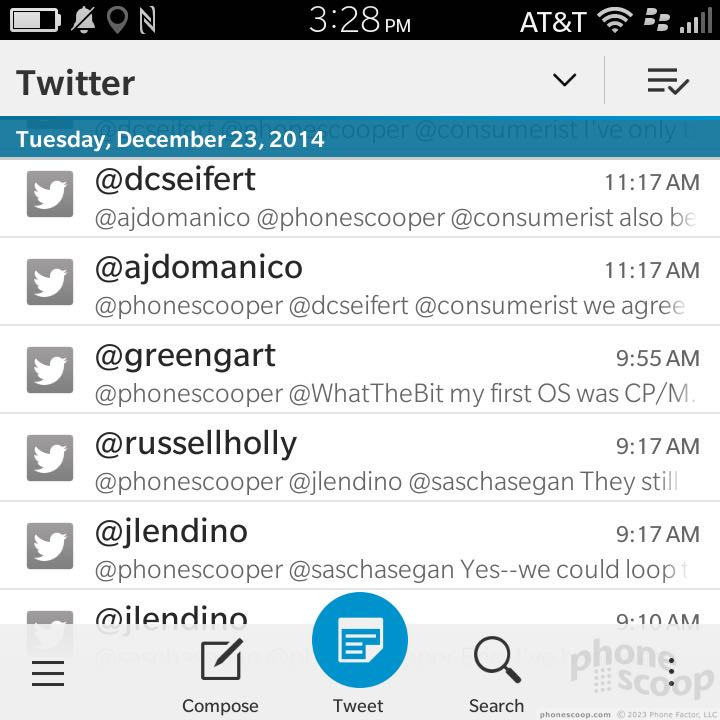




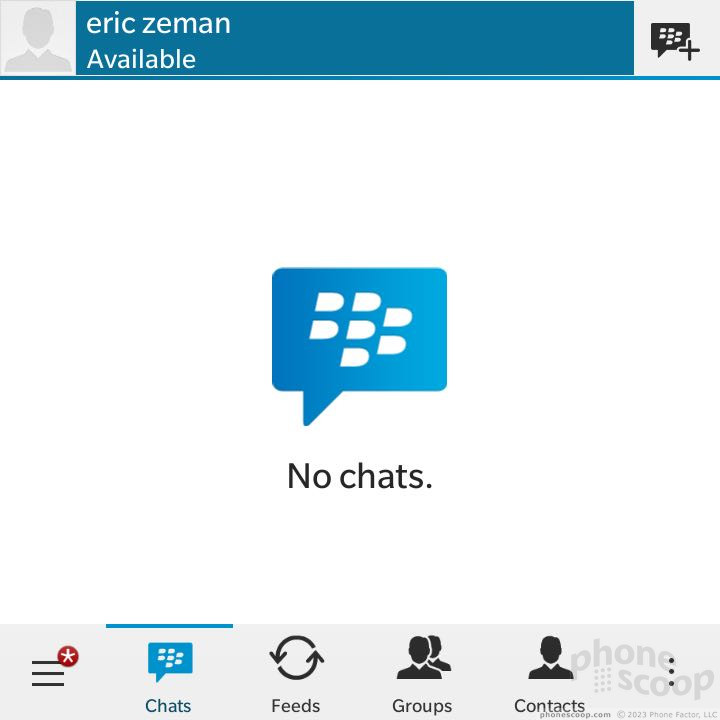





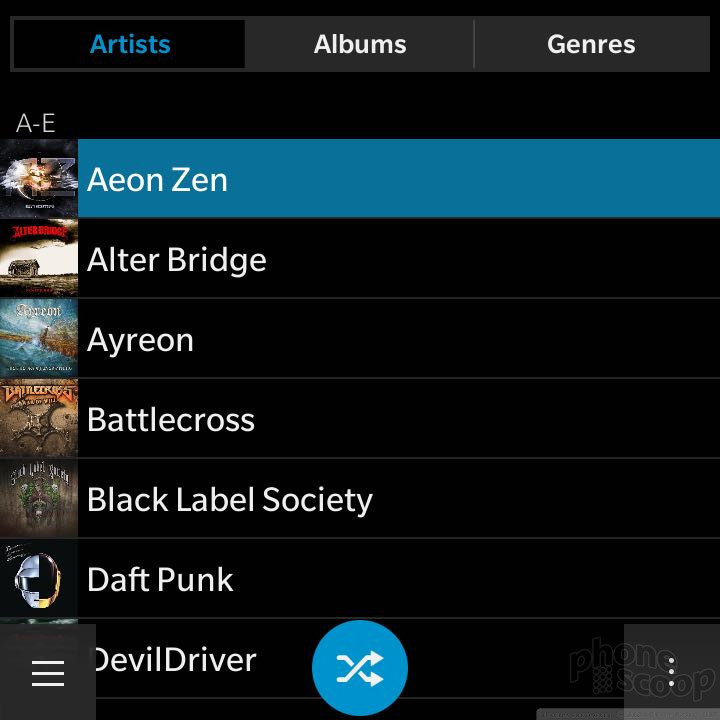








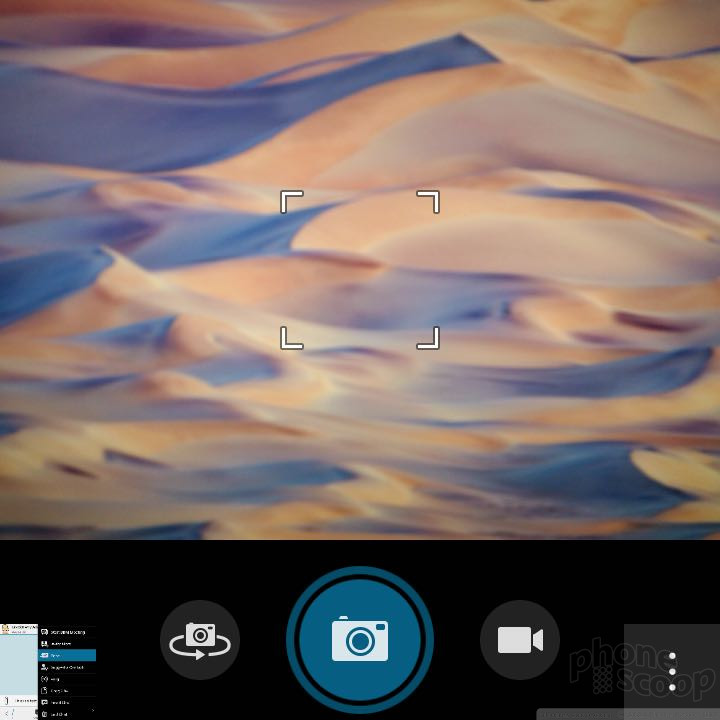

















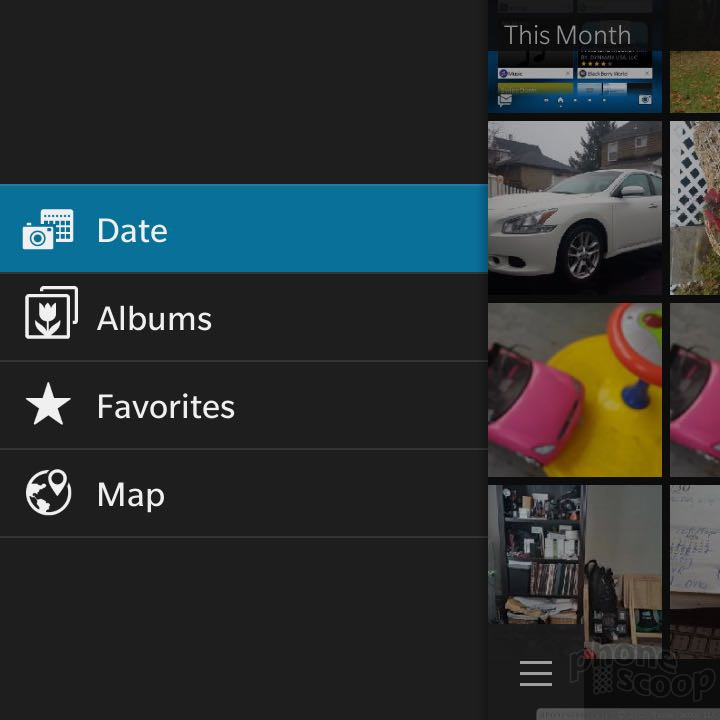






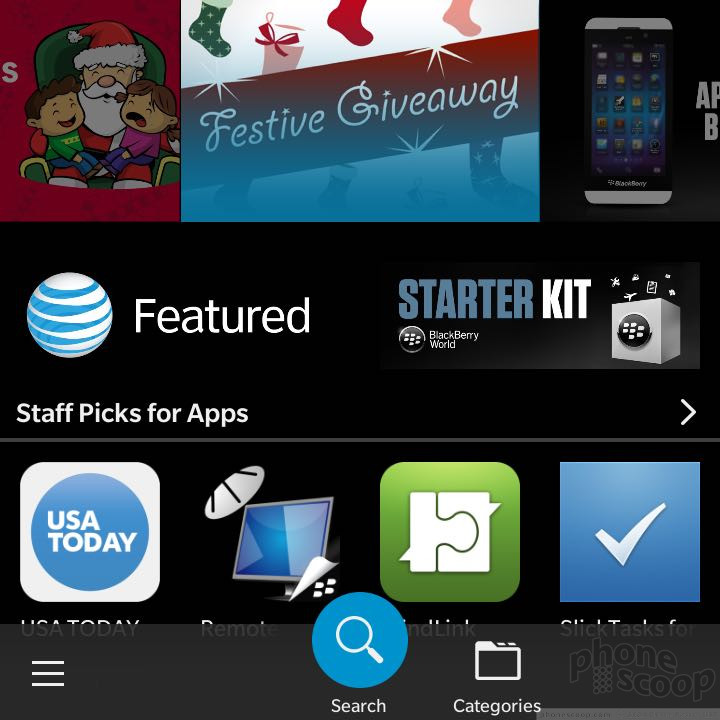





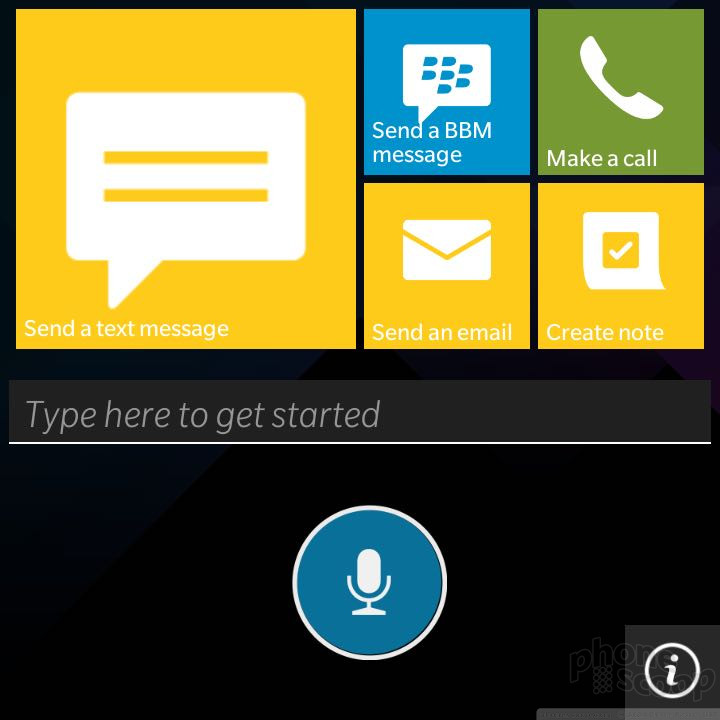






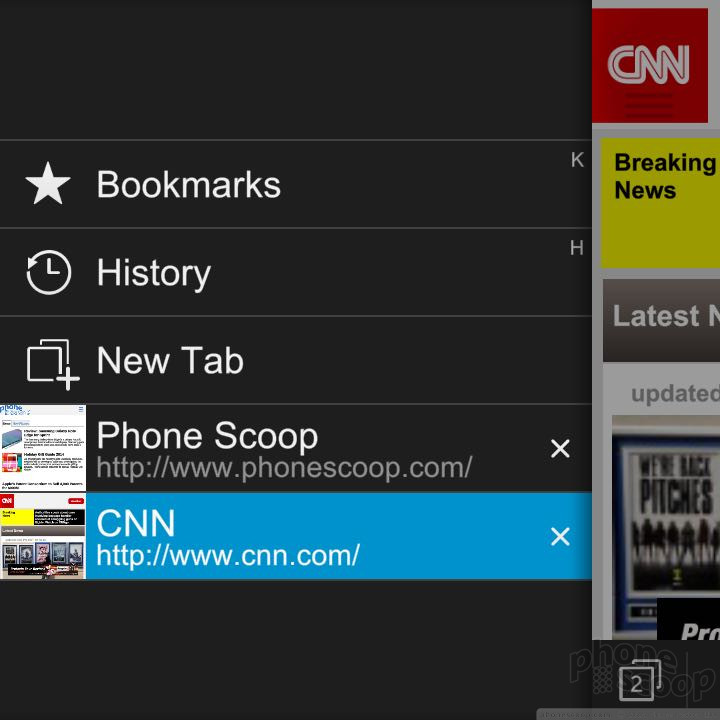




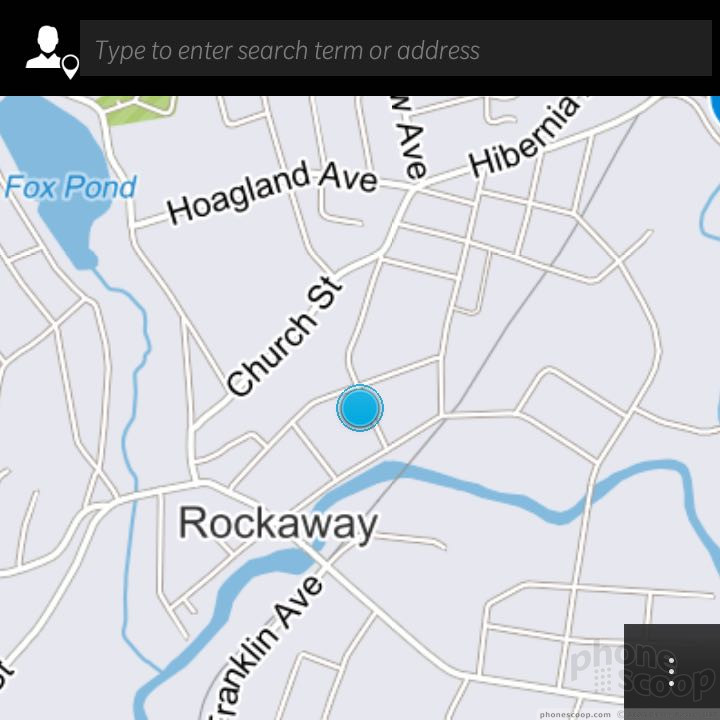







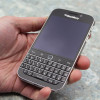 Hands-On: BlackBerry Classic
Hands-On: BlackBerry Classic
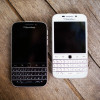 BlackBerry Puts the Classic to Pasture
BlackBerry Puts the Classic to Pasture
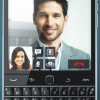 T-Mobile to Sell BlackBerry Classic May 13
T-Mobile to Sell BlackBerry Classic May 13
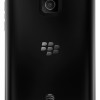 AT&T Reveals BlackBerry Classic and Passport Pricing
AT&T Reveals BlackBerry Classic and Passport Pricing
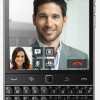 BlackBerry Shows Off the QWERTY-Equipped Classic
BlackBerry Shows Off the QWERTY-Equipped Classic
 BlackBerry Classic (GSM)
BlackBerry Classic (GSM)
 BlackBerry Classic (CDMA)
BlackBerry Classic (CDMA)










